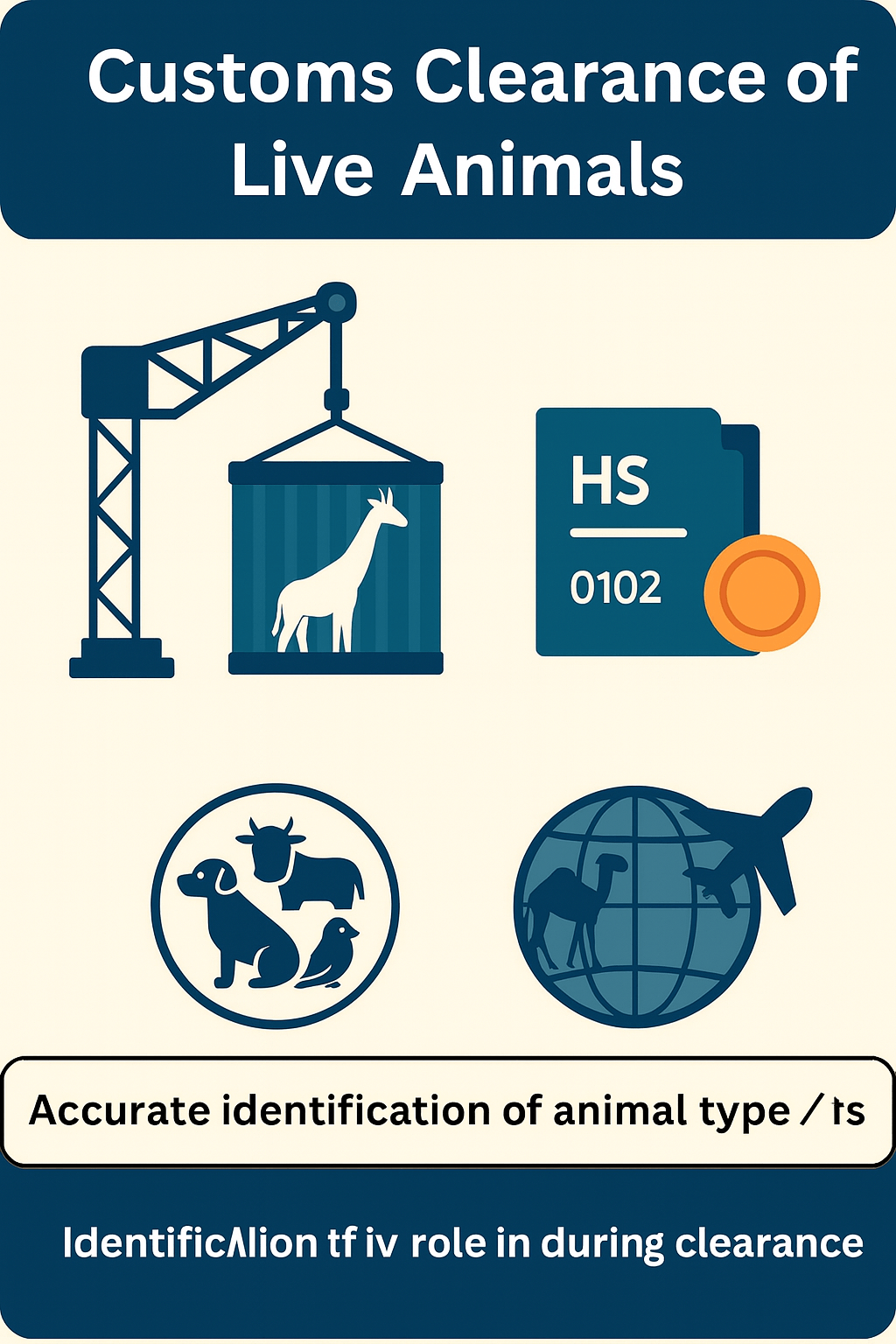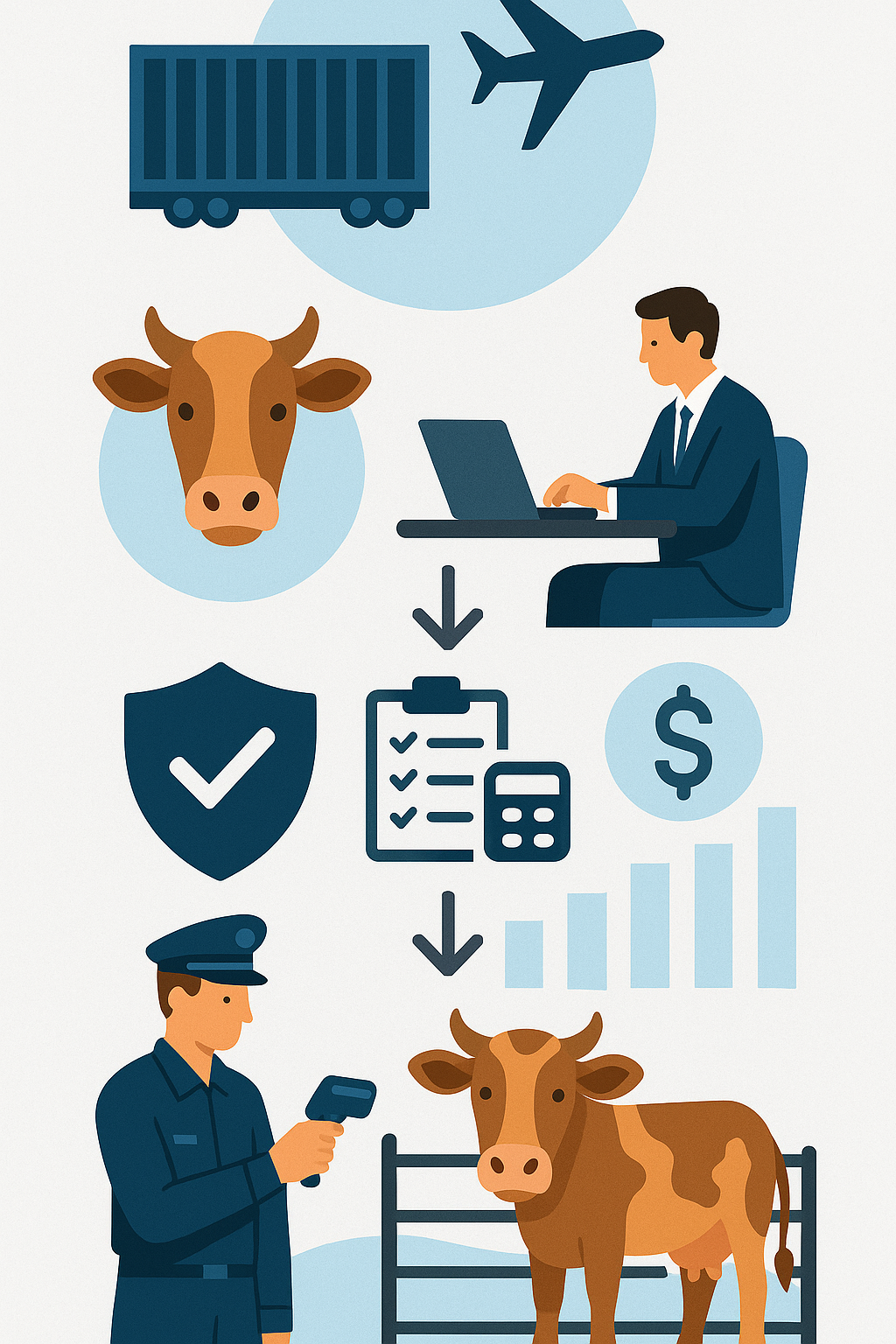Live Animals Customs Clearance in Iran | Complete Guide, Permits, Quarantine, and HS Code
For checking the timeline and cost of live animals clearance, contact the Saba Tarkhis experts.
Fast & Free Consultation
2) Customs Classification and Related Tariffs (HS Code Chapter 01)
Each type of live animal has its own HS (Harmonized System) code that determines customs tariffs and other related legal requirements. Some of these codes include:
| Group | Short description | HS Code |
|---|---|---|
| Cattle (bovine) | Domesticated bovine livestock | 0102 |
| Sheep and goats | Light domesticated livestock | 0104 |
| Live birds | All kinds of poultry and birds | 0106 |
Correct HS Code selection is crucial to avoid delays, valuation disputes, and penalties.
3) Import Regulations and Requirements for Live Animals
Veterinary Health Certificate
Iran Veterinary Organization Permits
Quarantine Regulations
4) Transport and Handling Standards for Live Animals
International Air Transport Standards (IATA)
For air transport of live animals, IATA standards must be observed; including crate requirements, interior space, ventilation, feeding, and sanitary care.
Road and Maritime Transport Conditions
For road and sea transport, specific requirements must also be observed to keep animals in proper conditions during the journey; including periodic checks and provision of veterinary services when needed.
5) Clearance Steps and Required Documents
- Document review and approval: veterinary health certificate, import permits, transport documents, and other required paperwork.
- Customs formalities: payment of customs duties, taxes, and fees related to clearance.
- Physical inspection and sanitary testing: sampling, laboratory tests, and issuance of release authorization upon health approval.
6) Market and Trade Analysis of Live Animals
Main Exporting Countries
Iran’s Export Market
Iran is also active in exporting live animals to neighboring countries and the Persian Gulf region. These exports mainly include live livestock such as sheep and goats and certain birds.
7) The Role of Saba Tarkhis Brokerage in the Clearance Process
Key Points and Practical Recommendations
- Determine the HS Code based on the species (livestock, birds, …) and the purpose of import.
- Prepare and keep the veterinary health certificate up to date in accordance with OIE standards.
- For sensitive consignments, coordinate quarantine plans and additional inspections in advance.
- For air transport, follow IATA standards; for road/sea, observe animal welfare requirements.
| Group | Clearance sensitivity | Control point | Suggested HS |
|---|---|---|---|
| Cattle (bovine) | High | Vaccination/health | 0102 |
| Sheep and goats | High | Endemic disease control | 0104 |
| Live birds | Very high | Avian influenza/quarantine | 0106 |
 e
eFrequently Asked Questions
What documents are required to import a live animal?
Veterinary health certificate from the country of origin, import permit from the Iran Veterinary Organization, transport documents, invoice, packing list, and environmental permits if necessary.
Is quarantine mandatory for all consignments?
Yes. All live animals are subjected to inspection and quarantine upon arrival to verify their health and compliance with sanitary requirements.
How is the HS Code for live animals determined?
The HS Code is determined based on the species (livestock, birds, …), the purpose of import, and international classification for example, 0102 for cattle, 0104 for sheep and goats, and 0106 for birds.
How does Saba Tarkhis help?
From obtaining permits and coordinating quarantine to completing customs formalities and supervising transport, our team manages the entire process and minimizes clearance time.
Specialized Live Animals Clearance Services by Saba Brokerage
With years of experience in customs clearance and particularly in live animals clearance at Iran’s main customs Saba Brokerage provides comprehensive and specialized services to its clients:
- Specialized consulting: our experienced team, well-versed in animal quarantine regulations, sanitary standards, and international requirements, offers the best solutions for live animals clearance.
- Document preparation and follow-up: the veterinary health certificate, the Veterinary Organization permit, and live-animal transport documents are of high importance. We carefully follow up and complete all these documents.
- Compliance with animal safety and welfare standards: transporting and housing live animals requires observing IATA standards and welfare principles. We conduct the clearance process while ensuring these standards are met.
- Expediting the clearance process: leveraging extensive connections and familiarity with customs procedures, we manage live animals clearance faster and at lower cost.
- Post-clearance services: after entry, we also provide services such as advice on domestic transport, insurance, and housing.
Contact our experts now for specialized consulting on live animals clearance.
.png)
